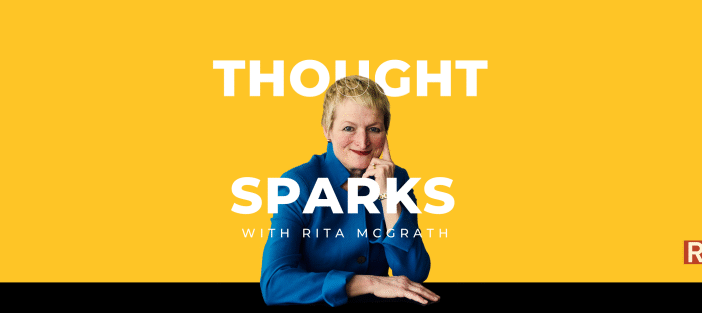
The very human tendency to continue to pursue a failing project, strategy or investment just increases the suffering when the inevitable happens. What are some indicators its time to pull the plug?
Verizon’s recent decision to divest Yahoo and AOL reminded me of a question I get all the time. How do you know when its time to give up on a project, program or strategy that once looked really promising?
When Verizon bought AOL in 2015, then-CEO Lowell C. McAdam crowed that the deal was part of a “strategy to provide a cross-screen connection for consumers, creators and advertisers to deliver that premium experience.” In fairly short order, he was persuaded by AOL head Tim Armstrong to add Yahoo to the mix, with both companies and other digital properties to be put together in a subsidiary called Oath in 2017.
Outsized hopes and bold claims
Boldly, the Oath team launched a global campaign called “Build Your Brand” which promised that it would leverage Oath’s “expertise in building strong brands that capture the hearts and minds of today’s consumers by combining award-winning content, unique data and cutting-edge technology at a massive global scale.”
Well, that was then. Before the huge hack at Yahoo that exposed three billion (yes with a “b”) users to potential cybercrime. Then there was the scandal in which Verizon was exposed for trafficking user data around the Internet with a stealth piece of code that users couldn’t delete and which exposed them to hackers. There was the ill-fated Go90 streaming service that was shut down in 2018 (streaming for millennials, because hey, don’t you long for entertainment from the phone company?). Then there was the acquisition of former Hulu CEO Jason Kilar’s startup, Vessel, a subscription service for short-form video. In that case, the company didn’t even pretend it wanted the startup – it basically took over its technology and shut it down.
The reckoning arrived toward the end of 2018. Verizon wrote down the value of its media properties to the tune of $4.5 billion. The reality was, as the Wall Street Journal pointed out at the time, “that U.S. digital ad spending is on track to rise 26% this year to about $111 billion, but Google is capturing 37% of those dollars while Facebook accounts for another 20%, according to estimates by eMarketer. Oath’s share is expected to fall to 3.3% from 4.1% last year.” Armstrong, the architect of the strategy, walked away from the company in 2019, pocketing more than $60 million in compensation for his efforts (you can’t make this stuff up…).
McAdam announced his retirement as CEO in the midst of all this, himself receiving pretty amazing compensation for masterminding the strategy ($17.7 million in 2017 alone, according to some sources). The new guy? A former CEO of networking equipment giant Ericsson, who had been in the role of Chief Technical Officer and EVP of Global Networks at Verizon, Hans Vestberg.
Choosing him as a leader pretty much guaranteed that Verizon’s media dreams were toast. Vestberg has eaten, slept and dreamed telecom networks for his entire career, and wasn’t about to stop doing that now. Building out the network, being a dominant player in 5G and assuring Verizon had the cash to compete with huge rivals such as ATT in the business of being a phone company were much more to his liking. He even took the virtual stage at the Computer Electronics Show to promote a pretty obscure piece of tech called “Mobile Edge Compute.”
Deciding when to pull the plug
The Verizon Media effort, which took place in a relatively compressed period of time, reflects both the good and the not-so-good ways in which disengagement decisions are often made.
Let’s start with the not-so-good. While I argued at the time that the move was an effort by Verizon to becoming more than a “dumb pipe,” I coupled it with the advice that they treat their new media businesses as ‘real options’ in which the company could learn what the real business opportunity was. At the time, I was pretty skeptical, noting that the company had a lot of indispensable pieces that didn’t add up to an indispensable whole.
The watchword when you are purchasing an option is that you want it to be a relatively small investment that buys you the right, but not the obligation, to make decisions down the road when you have more information. The whole Verizon media effort, involving tens of billions of spending on acquisitions and other efforts was a “big bang” attempt to break into the Facebook / Google ecosystem and capture more ad spending, despite these rivals’ pretty commanding lead.
A second problematic issue to me, is that there wasn’t much being done in the Media division in the way of testing critical assumptions. How were the properties going to uniquely add value? Would global brands want to be tied to faded 1990’s Internet properties? Would Tim Armstrong’s reality distortion field prove to be powerful enough to overcome other inertial forces? Without testing these, the division moved forward as though it knew what it was doing, to fall embarrassingly short when those assumptions proved to be….well, let’s just say not borne out by subsequent experience.
The replacement by Vestberg of McAdam and the re-visiting of the assumptions in the already-downward spiralling media business certainly made the disengagement decision easier. With the old guard gone, the politics of that particular kind of transformational move aren’t too hard to predict.
Key questions to ask
When revisiting something that you once had high hopes for to see if it is worth continuing, there are a few practical questions you can ask.
Are we at risk of escalating our commitment to this effort for psychological, not logical, reasons? The escalation phenomena was identified years ago by Barry Staw and Jerry Ross. It’s profound and goes a long way toward explaining the existence of so many major flops that derailed long after everybody knew they were doomed.
Are the assumptions in our BareBones NPV calculator still holding, or has something changed that suggests we were being unrealistic? In a previous Thought Spark, I described the concept of a BareBones NPV calculator that you can use to get a rough idea of total project value. Check it out to learn the concept and download the estimator tool.
Is our effort, given what we have now learned, still going to be able to deliver to our strategic objectives? In Discovery Driven Planning, we argue that you can use a reverse income statement to see whether you are on track to meet your required objectives for the program. For a terrific worked example of this, see this article on Medium.
Is this program more attractive than other things we could be doing with our time and people? We forget that as things change, the value something once may have had is no longer solid and something new may be more attractive or useful.
The next chapter beckons
So what did Verizon get right about this decision to disengage? The new CEO (and rather new operating team) meant that anyone who had been emotionally attached to the idea was safely out of the way. Clearly, the assumptions in whatever calculator they were using to justify the program were way off, and they recognized it. The realization that even if things got a lot better they were unlikely to be successful in the media world eventually sunk in.
And of course, if you are a telecom network kinda guy, with the weight of the core business behind you, that’s going to look a lot juicier than battling it out in markets for which you have no aptitude or appetite.
